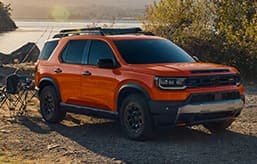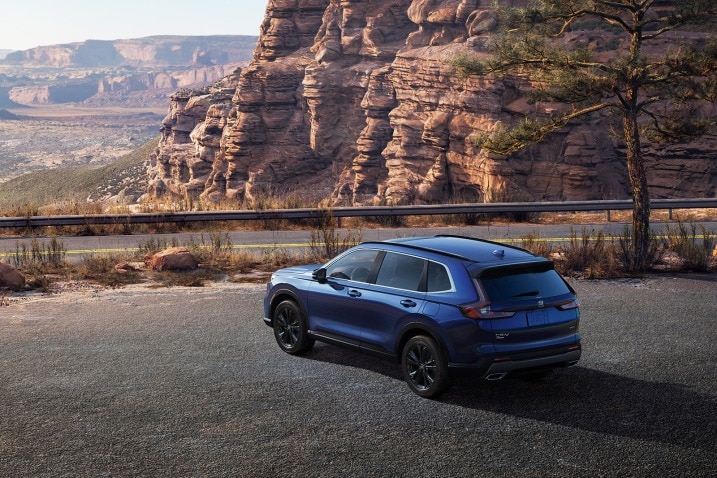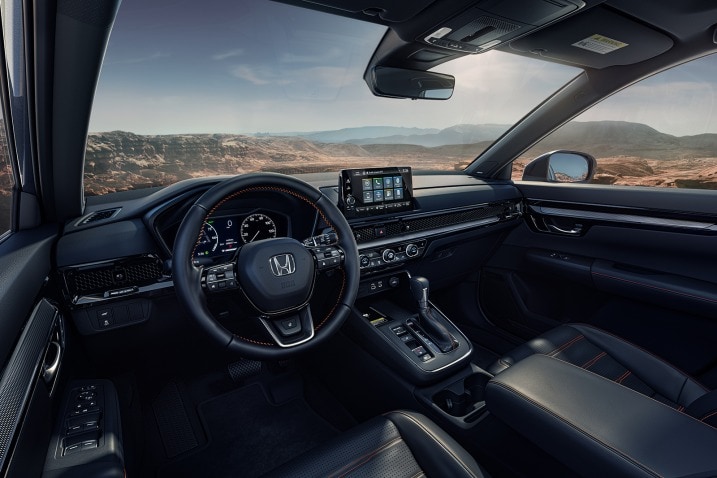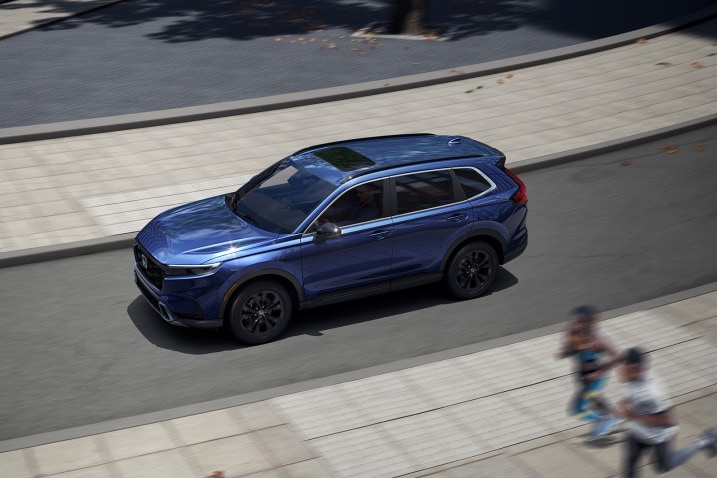- The Honda CR-V SUV is redesigned for 2023
- Still offered in gas-only and hybrid trim levels
- We've driven the hybrid, which Honda now calls the CR-V Sport
- CR-V goes on sale this month; Sport starts at $33,695
Hybrid-Powered 2023 Honda CR-V Sport Touring Is a Mixed Bag on the Road
The CR-V Sport Touring is great in the city but struggles on hills and the highway
Honda wants its hybrid cars to become more mainstream as the car-buying public transitions to electric. The 2023 Honda CR-V hybrid, now called the CR-V Sport, is a crucial stepping stone as the company's best-selling model in the U.S. market. Honda expects 50% of CR-V sales to be hybrid for this generation. It's also facing off against its longtime rival, the RAV4 Hybrid, as well as the newly introduced Hyundai Tucson Hybrid and Kia Sportage Hybrid. So it needs to be good. And it is ... mostly.
New name, who dis?
Honda has simplified the CR-V lineup for 2023 by integrating the hybrid with the gas version — it's no longer a separate model. The base EX trim starts at $32,355 and is only available with the gas engine. Then comes the hybrid-powered Sport at $33,695, followed by the gas-only EX-L at $35,005 and the hybrid Sport Touring at $39,845. All of those prices include the $1,245 destination charge. For the first time, you have to commit to the hybrid powertrain to get a fully loaded CR-V.
New looks and more cargo space
The 2023 CR-V Hybrid — err, CR-V Sport — is a handsome thing. At a minimum, we think it looks better than before, with a more rugged shape and aggressive details. Honda darkened the headlights for a more stealth look, and the CR-V keeps its signature upright taillights, with new LED inserts. The former looks surprisingly great, the latter looks like a Volvo (for better or worse).
The CR-V's interior is related to that of the new Civic. While Honda isn't doing much to individualize its new cars, the good news is that we're big fans of this cabin. And this CR-V Sport Touring has the best of Honda's offerings at the moment: a 9-inch touchscreen display with wireless Apple CarPlay and Android Auto smartphone integration, leather seats with three-stage heating, and the upgraded Bose sound system. This is the most grown-up-feeling CR-V that the company has ever produced.
Overall interior volume is virtually the same as the prior generation, but there's more room for your junk in the trunk. The old CR-V Hybrid could handle 33.2 cubic feet of cargo with the seats up and 68.7 cubes overall. Those numbers increase in the new model to 36.3 and 76.5 cubic feet, respectively. And as a strange added bonus, Honda says this power tailgate is the fastest operating that it's ever built. Now that's a fun thing to brag about at your next neighborhood barbecue.
204 horsepower and up to an EPA-estimated 40 mpg combined
We knew going in that there's room for improvement for the hybrid powertrain in the CR-V. We drove and lived with a 2021 Honda CR-V Hybrid for a year as part of our long-term testing program and came away unimpressed. We never achieved the EPA's estimated fuel economy in real-world driving, and its occasionally slow and noisy acceleration made us think the regular CR-V and its turbocharged engine is the better buy for most shoppers.
Alas, under the hood of the Sport and Sport Touring is a familiar powertrain. It's a 2.0-liter four-cylinder paired with two electric motors. Total output is 204 horsepower, just 3 more hp than before. Torque rises from 232 lb-ft to 247 lb-ft. Still, that's shy of chief rival Toyota RAV4 Hybrid's 219 horsepower.
Honda says the new CR-V hybrid will achieve an EPA estimate of 37 mpg in combined city/highway driving with all-wheel drive (AWD). This is slightly less fuel efficient than its predecessor — 38 mpg combined — which came with AWD as standard. You can get the 2023 CR-V with the hybrid powertrain and front-wheel drive, however, and that results in an estimated 40 mpg combined.
These numbers are certainly decent, but one might have hoped for a little more from an all-new Honda hybrid. For comparison, an AWD Toyota RAV4 Hybrid posts an EPA-estimated 40 mpg combined, and we've found it gets that in real-world driving, too. We look forward to recording our own real-world numbers for the CR-V soon.
The driving experience is a mixed bag
We know this powertrain is more efficient in the city, but unfortunately, our first drive was almost entirely on the highway. And right away, we encountered some bad mannerisms. The first hill forced the engine to dig deep, keeping the revs pinned and introducing a less-than-stellar engine note into the cabin. Any time we were met with an incline, the engine felt overworked to supply power.
Things didn't get better on the descents either. It's great that Honda includes variable brake regeneration with the hybrid powertrain, but when the battery is collecting power (going downhill, for example) the whine from the electric motor is loud — really loud. We actually thought it was the engine kicking back on, but indeed it was the e-motor making its presence known. A hybrid powertrain is supposed to be seamless and quiet. More often than not, the CR-V Sport Touring was neither of those two things.
And that's unfortunate because the brief time spent on city streets was a completely different story. From stoplight to stoplight the car was quiet and composed, spending an impressive amount of time in electric mode. Around town, this is a great car to drive, and the 13 extra miles per gallon (city figure) over the gas-only model is a huge gain.
Edmunds says
The good news is that Honda's best-selling car is better, with a comfortable interior and a more lively exterior design. The bad news is that we still prefer the gas version to the hybrid. Our real-world fuel economy testing might be compelling enough to change that soon, but after this hybrid first drive, we don't see enough of a change to recommend it.








 by
by